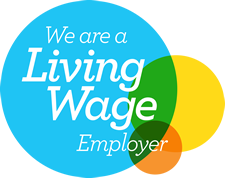
Insights
Helping not-for-profit organisations develop and sustain
the highest levels of employee and volunteer engagement

Insights
Surveys give your people the opportunity to have their say, providing deep insight to help you increase engagement levels. While it’s great to hear positive feedback, a successful survey gathers opinion from everyone, engaged and less so.
I analysed the response rates of over 200 engagement surveys run by Agenda to understand:
On attaining a low response rate, clients sometimes say “well that’s a finding in itself – people must not be that engaged as they don’t want to do the survey”. I investigated this to see what evidence there is to back this claim.
Agenda employee surveys use the question “I would recommend this organisation as a good place to work” as the Engagement Index, to measure how engaged people are. Comparing the relationship between our Engagement Index and response rates, I found that the relationship was much weaker than I expected. How engaged respondents are does not give the whole story behind response rate.
Following this, I analysed a variety of factors to help develop our understanding around why some surveys attain high response rates and others don’t.
Agenda has conducted over 200 employee surveys in the last 5 years and I have investigated the response rates achieved in each of these surveys to see which factors have relationships with response rates.
There will be many elements impacting your organisation’s response rate which set it above or below the sector or size group it fits into. These figures allow you to draw the comparison of your response rate relative to the median for your organisation’s characteristics.
Agenda uses median scores in engagement surveys when comparing your question scores with your selected peer group. The median is a type of average and in essence, is the middle value in a data set. We use this as it represents a real score from a real survey, as well as reducing the effect of outlier (extreme one off) results.
How does the response rate vary between employee and volunteer surveys? Looking at these figures, you could consider a 20% response rate in a volunteer survey a success. In contrast, a 20% response rate for an employee survey would be disappointing.
As you can see, the sector your organisation is in can have a profound relationship with your response rate. These results emphasise how context is important. For example, in light of these results, a 65% response rate for a Social Care organisation would be a success, however 65% for a General Third Sector organisation would be relatively disappointing.
The data suggests the more employees an organisation has, the lower their response rate. Is your response rate high or low relative to the average for your organisation’s size or sector?

“The leadership group understands the views and opinions of staff”
Of all the questions I analysed, this benchmark question had the strongest correlation with response rate, with a correlation of 0.41.
“I believe that the leadership group will act on the results of this survey”
Leadership acting on the survey results, received the second highest correlation with response rates, at 0.30.
These results suggest you might achieve higher response rates when your people are more connected with the leadership team and believe the leadership will take the survey – and their feelings, seriously. This reinforces advice we already give to our survey clients.
In my experience, the planning and design of a repeat survey is smoother, the whole process feels more familiar and you have a survey structure which you can build on or keep as is. The results indicated that repeat surveys achieved higher response rates than initial surveys.
Interestingly, there is also a noticeable difference in the median response rate for initial and subsequent surveys. There are likely multiple reasons for this:
Some clients provide us with their people’s demographic data in advance of the survey. The data is linked to a respondent’s work email address, so when they complete the survey, this data is already populated. This is great as the respondent has fewer questions to answer and it increases the accuracy of the answers.
My findings suggest that pre-loading demographics has a positive influence on response rate. I would strongly encourage this approach for your future surveys if you have adequate demographic data to share.
So, there you have it. I hope this analysis provides some food for thought. I now expect perfect 100% response rates from everyone! I jest, and I am sure you will know the personality and quirks of your organisation which have their own unique influence on your own response rate. However, using these general tips, I am confident that everyone can enhance their survey response rate.
I would love to hear how your scores compare. Get in touch with me by email or by telephone on +44(0)1865 263720.
Agenda Consulting
Belsyre Court
57 Woodstock Road
Oxford
OX2 6HJ
UK
Company No: 4509427
